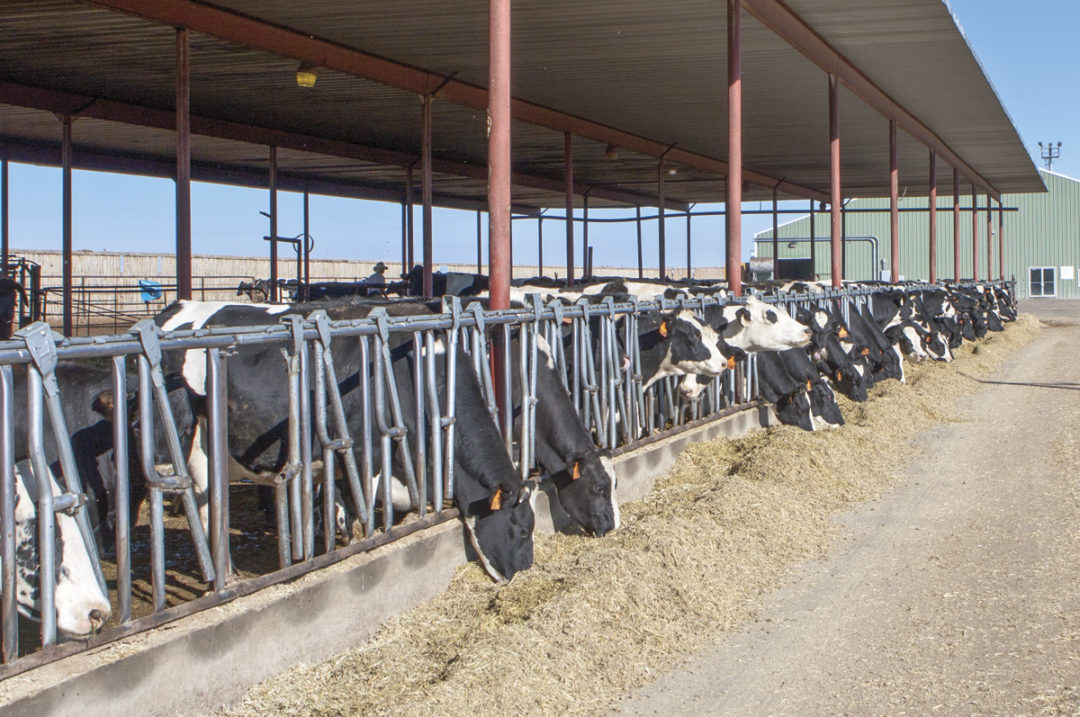Feed efficiency is a topic that’s been kicked around nutrition circles for some time. For decades, producers and nutritionists have focused on getting more milk from each pound of feed.
The issue has always been measurement. To get a good handle on efficiency, we need to measure what goes in and what comes out. Today, the “what comes out” part of the equation is falling into the sustainability conversation.
Before we get into that conversation, let’s think about how efficiency is measured.
Intake is tough to measure
Originally, the efficiency equation was simple: pounds of feed consumed divided by pounds of milk produced. The productivity part of the equation is easy since most dairies measure daily milk per cow. That side of the equation evolved to include energy- or fat-corrected milk to take into account the amount of fat and protein produced per pound of milk.
But to truly measure feed efficiency, you need to understand how much feed your cows are eating. That’s forever been the sticking point with dairy producers. There’s not an easy way to measure feed refusals or feed offered, and even if you do take refusal weights, it’s nearly impossible to know how much feed an individual cow consumes during the day. But intake measurements evolved as well, moving to a group analysis because it’s relatively easy to know how much feed is delivered to a pen each day as long as you don’t have pens with large variation in days in lactation.
Now, if we know how much energy-corrected milk is produced by cows in a specific pen, and we know how much feed is delivered, we can guess at refusals to come up with an intake number per pen and a feed efficiency number that is relatively accurate.
But as we learn more, we know that the feed efficiency number needs to continue to evolve. For example, cows produce more than milk and milk solids. They also produce meat and calves, which takes energy and nutrients. Therefore, if we think about how efficient a cow processes feed, any change in bodyweight, measured either directly through cow weights or as body condition, should be considered as well.
Into the sustainability conversation
Taking the conversation one step further takes us straight into the sustainability marketplace. We can break down the feed conversion topic into one basic element: carbon. For that topic, we focus on simple biology. We feed cows different elements every day – carbon, hydrogen, nitrogen, oxygen, all of the elements. But essentially, the system is carbon-based. Any carbon you feed is used in one of three ways:
- It comes out of the animal as manure or undigested feed
- It’s used inside the animal in milk or meat production or any other essential activities
- It’s let off into the atmosphere as methane, carbon dioxide and other gases
With this in mind, any way we can find to improve the capture of a carbon product – milk, meat, methane or other gas – then we can improve efficiency. A simple but important way to do that is by improving feed digestibility. When we improve feed digestibility, we automatically improve efficiency, assuming dry matter intake (DMI) doesn’t change. If more of the feed is digestible, then more of the carbon – if it makes it past the intestine and into the bloodstream – is turned into something other than gas. That includes capture of carbon in the rumen as microbial protein or as volatile fatty acids (VFAs) as opposed to methane or carbon dioxide.
Still, with all of the more advanced thinking around carbon capture and its relationship to efficiency, we still need to at least have a good idea of how much cows are eating. There is feed tracking software that does a good job of measuring how much feed is delivered to a certain group. Activity monitoring software has advanced to help us understand how often a cow eats, how many chews and ruminations she has, etc. But we are still working on how to correlate that to feed intake. Just because an animal is going to the bunk more often, it doesn’t mean she’s eating more than a cow that goes less often.
There is also indication that some cows may be genetically better at feed efficiency than others. There are major efforts on the genetics side of the equation to identify cows and bulls that are predisposed to higher efficiency. This effort involves the Dairy Innovation Center, Greener Cattle Initiative and the Center for Dairy Cattle Breeding, all under the guidance of the Foundation for Food and Agricultural Research at the USDA.
Residual feed intake
Residual feed intake helps identify a measure of feed efficiency without actually measuring intake or refusals. In this process, the ration is balanced to specific animals in certain stages of lactation and, based on the modeling program, determines that cows fed the diet should produce at a certain level. How much a cow produces above or below that benchmark provides an indication of her efficiency or lack thereof.
Like many aspects of agriculture, feed efficiency has evolved to be included in the conversation around sustainability and, more specifically, the reduction in greenhouse gases. Initial research showed that cows can be fed to reduce greenhouse gases, but efficiencies were not magnified because productivity dropped significantly. As time passed, more research was done to identify the proper balances that improve efficiencies and reduce greenhouse gas emissions without impacting cow performance.
There are products on the market that have been designed to reduce greenhouse gas emissions without impacting performance, and some hold great promise. In addition, any product that improves nutrient absorption in the rumen or intestines will lead to greater efficiency. That product category is crowded, and it would be wise to choose products from reputable companies backed by strong research.












